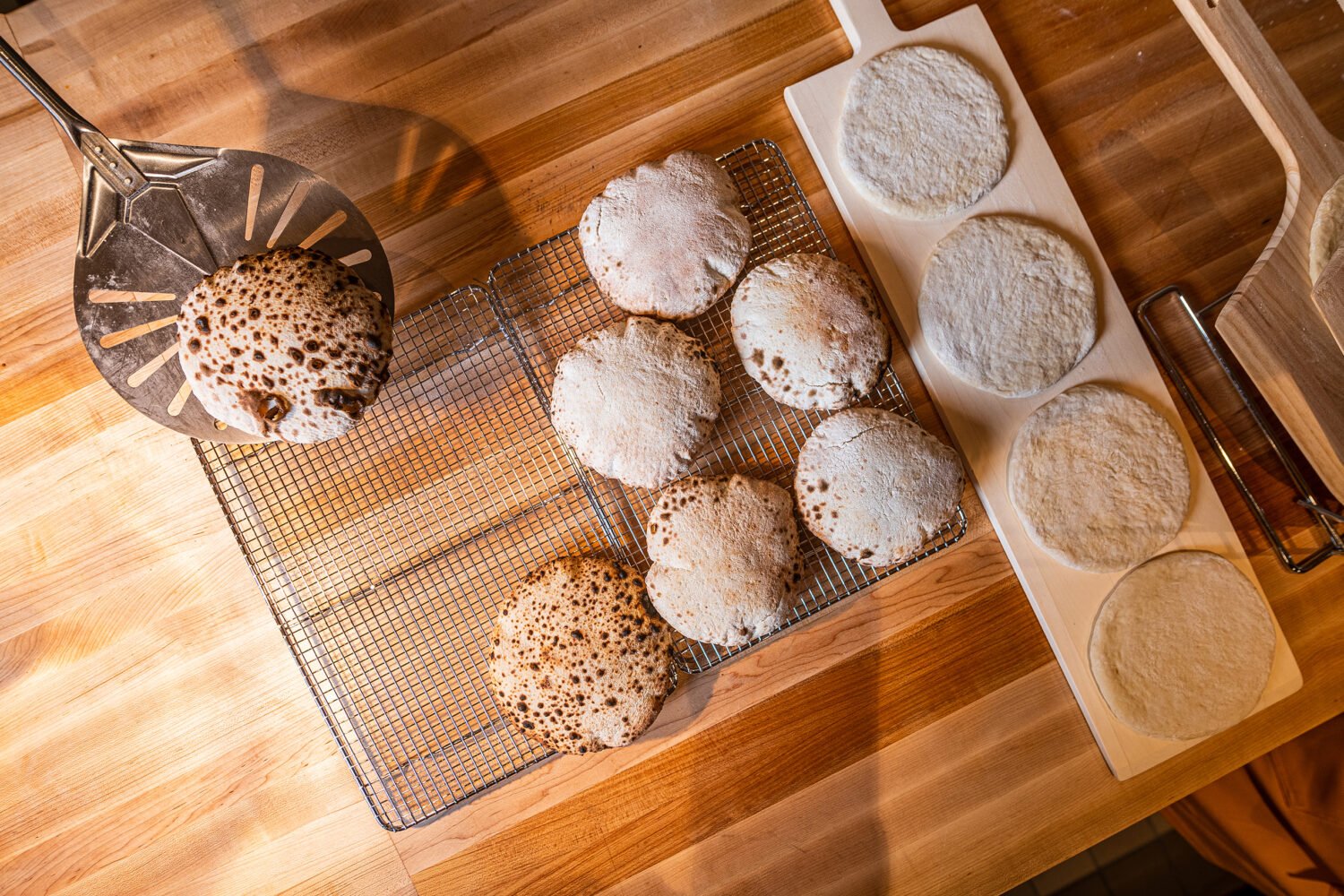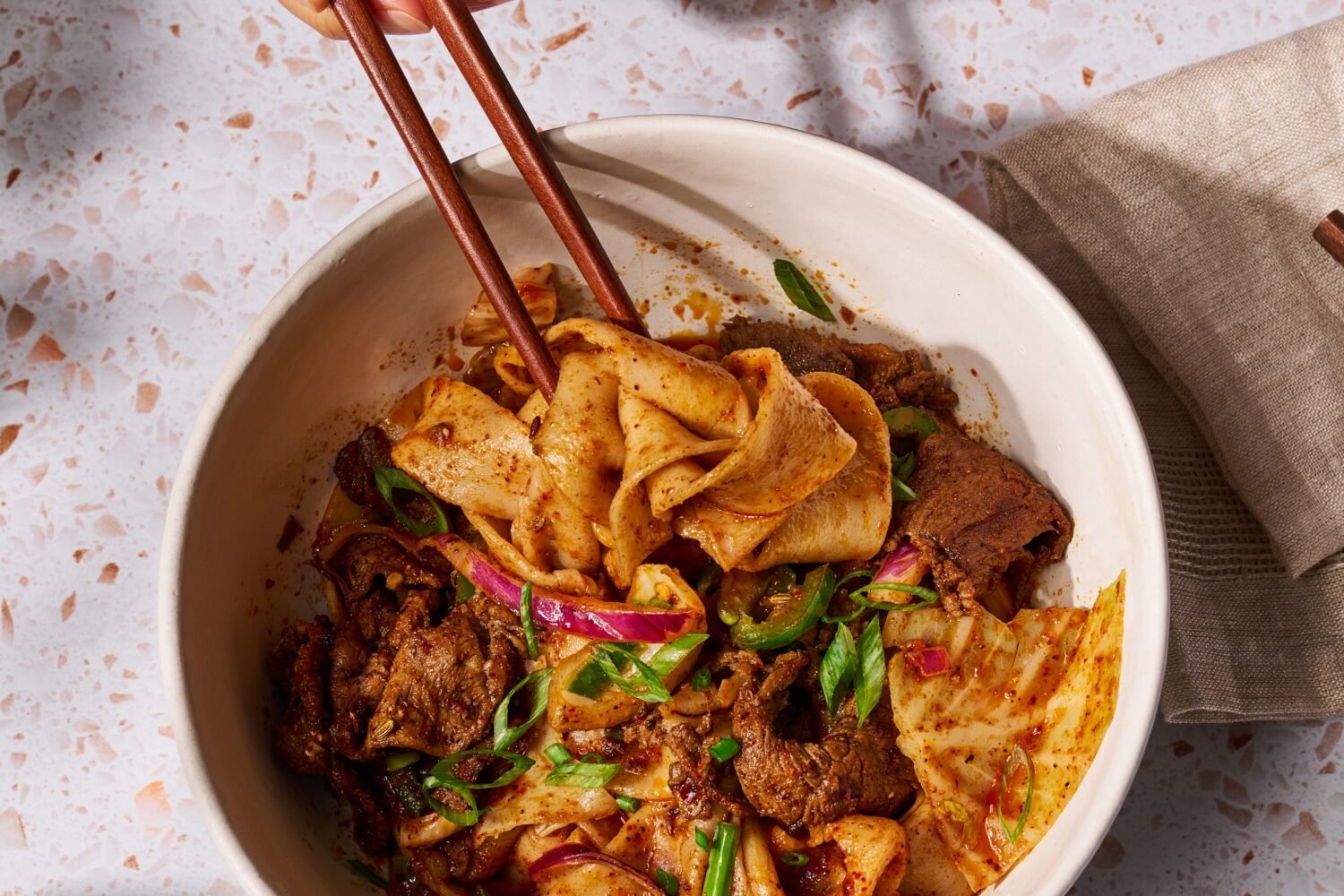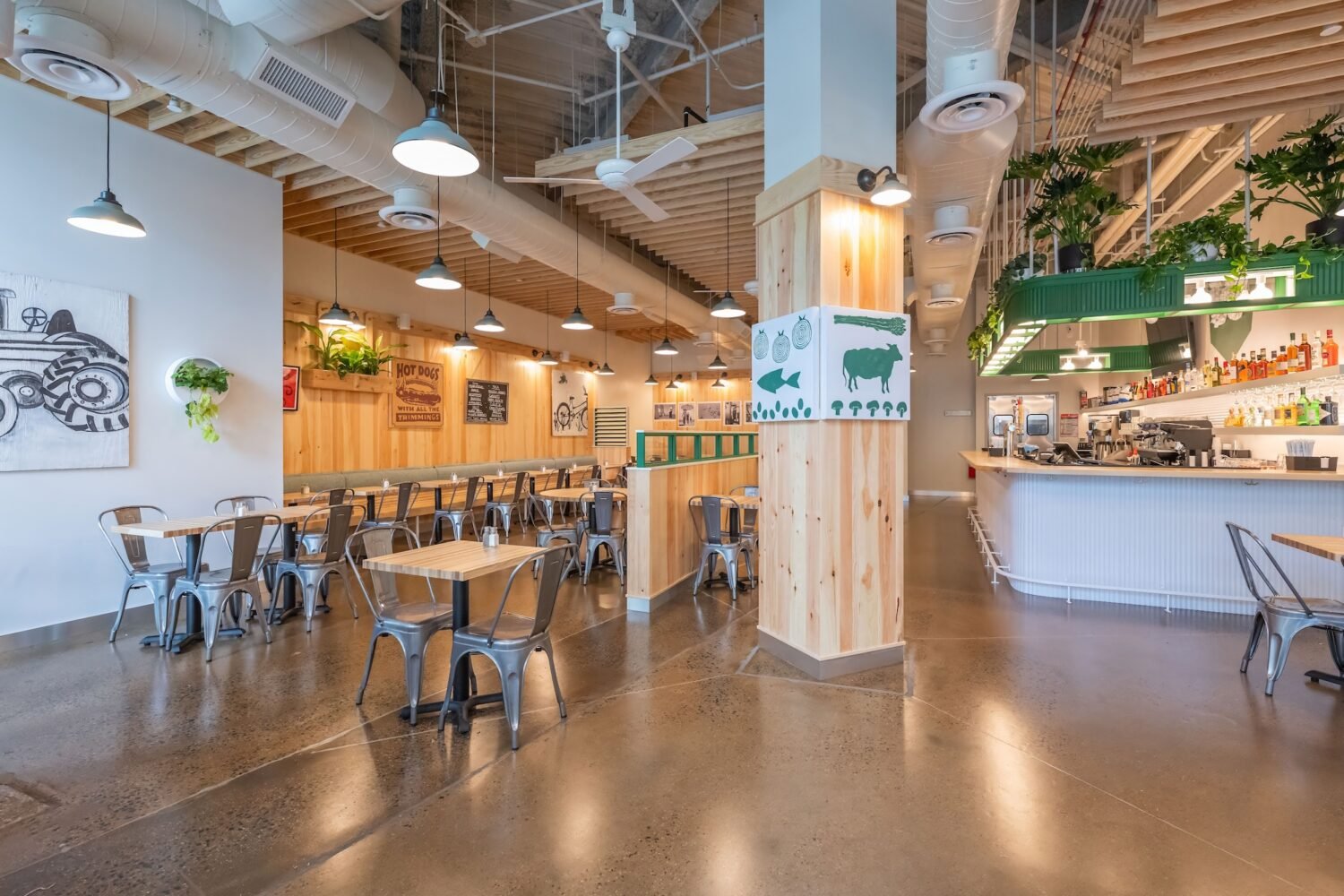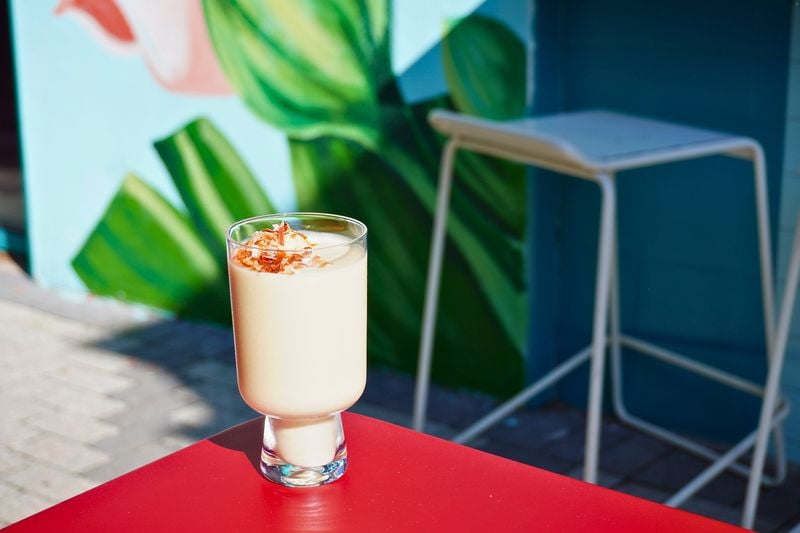
One way to gauge the effect of the economic slowdown on the local restaurant scene is to count the number of places that have closed in the last year. A better way is to add up the small changes as places contrive ingenious ways to stay solvent. Burgers and pizza have been elevated to the status of cuisine, entrées in many venues have shriveled to the size of appetizers, and big-ticket restaurants tout happy-hour and lunch specials with price-slashing fervor. No establishment seems impervious to the economic winds, not even a high-profile hotel property helmed by a high-profile chef. Which brings us to the curious arrival of Sou’Wester, from Eric Ziebold and the culinary team at the Mandarin Oriental.
Rustic and rooted are in, and Ziebold has taken note. Unlike at CityZen—where he indulges his appetite for experimentation, from subjecting a slice of monkfish liver to a foie-gras-style searing to making labor-intensive gastriques from baby pigs—at Sou’Wester Ziebold emphasizes the pleasures of hearty, Southern-style cooking. Biscuits, grits, crab imperial, chicken and dumplings, fried chicken make up the menu overseen by Rachael Harriman, a former sous chef at CityZen. No entrée comes near the $30 mark.
But to thrive, restaurants must do more than dial back their fine-dining ambitions. They must communicate a sense of place, of belonging. Sou’Wester has made a gesture in that direction, too, beginning with the name, a nod to the fact that the dining room looks out onto DC’s Southwest waterfront, and extending to the row of rocking chairs that front the restaurant and the woven place mats at the table.
The problem is that all these things that are important in the new dining calculus run counter to the hotel’s nature—and to Ziebold’s. It’s like watching the guy who favors pinstripe suits and wingtips try out casual Friday. He can put on the khakis and sweater, but he’s still going to look stiff.
The first night I showed up with a friend, a battalion of staffers materialized at our table as the first courses arrived. It could all have been handled by one waiter, but there were four: one with the giant pepper mill, one each for the two appetizers and salad we ordered, and one to play traffic cop and make sure all the elements on the table were squared and symmetrical. Another night, I watched a bottle of Miller being poured at the table into a Champagne glass.
All this for grits and biscuits?
To be fair, they’re not just any biscuits. You don’t chew them, for one thing—one bite and the entire thing crumbles, filling your mouth with buttery richness. They’re a Southern-style equivalent of the famed Parker House rolls at CityZen, so perfect that you could accuse the chef of showing off if they weren’t so irresistible.
The grits—stone-ground and with just enough coarseness to keep the dish honest—are likewise a triumph of technical expertise. Harriman surmounts them with a poached egg and tiny bites of sweetbreads, transforming the grits into something more substantial and even more gritty.
At a restaurant where local rockfish is put in service of a ceviche and where you’re not apt to find anything so ordinary as pickles, but rather pickled watermelon rind, would you expect anything other than this exacting degree of attention?
I had to laugh when my friend wrinkled his nose at his crab bisque one night. Accustomed to humbler renditions—in other words, to an overabundance of cream—he didn’t quite know what to make of the version at Sou’Wester, which emulsifies the crab innards to give the broth body, adds a shot of sherry, and scatters fresh crab on top. It’s a glorious soup, on a par with the most elegant I’ve had around town, from the lobster bisque at the late Farrah Olivia to the red-snapper bisque at Corduroy. But I got my friend’s point: He’d have been just as happy with a less rarefied version of a dish he knew and loved—particularly if he could have enjoyed it in a setting where he didn’t have to modulate his voice and where the servers weren’t bearing down on his table like a Secret Service detail.
At a certain point, you realize that as down-home as these dishes might read, they’re not all that down-home. These are precise, technically expert dishes that just happen to spring from humble origins. Chicken and dumplings looks as though it came out of a Deep South diner, but the chicken is a judiciously seared breast and the dumplings are light as meringue. Roast leg of shoat—a baby pig—with baked beans is a dish to indulge in, but it’s been so calibrated to avoid being overrich that it almost feels healthy. The fried chicken appears never to have been dropped in oil, it’s so dry and crispy.
I could have eaten two servings of the pan-seared porgy with crab imperial, the restaurant’s twist on the classic Maryland combination, before I was anywhere near as full as I usually am when I indulge in the fishhouse version.
No dish is as labored over as the hushpuppies. The identically sized bites are perfect outside and in, and accompanied by a small dish of honey butter whipped so smooth it’s a kind of butter purée. It’s as if Thomas Keller had taken over Arthur Treacher’s.
It’s hard not to think that Ziebold and Harriman believe they’ve used their mastery of French cooking to improve on the homey comforts of the South. But down-home cooking doesn’t need to be elevated; it’s one of the few cuisines that are better the simpler they are.
Gussied up, of course, is what you get with a Mandarin Oriental concept, whether it’s sushi or old-school Southern. The dining room used to be the home of Cafe MoZu, and despite the more stripped-down look and a few efforts at evoking Southern style, it retains the feel of a high-end hotel restaurant: grand and bland. The name, too, awkward as it is—even worse when you pronounce it—is a part of the same effort.
These are well-intentioned gestures attuned to the culinary moment. But they miss the mark. To walk into the Mandarin Oriental in Washington is to walk into the Mandarin Oriental in Hong Kong or Las Vegas. The Mandarin Oriental isn’t part of a neighborhood; it’s a neighborhood unto itself.
And so it is with Sou’Wester, a restaurant that seems to want you to understand that, within the setting of a luxury hotel and the constraints of the new economy, it’s offering a marvelously earnest effort—at a fraction of the cost of eating next door at CityZen. But a restaurant isn’t just a collection of dishes. Ziebold and crew would have done well to invest as much time in studying the culture of eating in the South as they did the cuisine. A lot of us, when we pine for old-school Southern cooking, pine for a relaxing good time. We don’t want to lower our voices. We don’t want to be eyed by the waitstaff. We don’t want to be reminded at every turn that we’re in a four-star hotel.
This appears in the December, 2009 issue of The Washingtonian.











